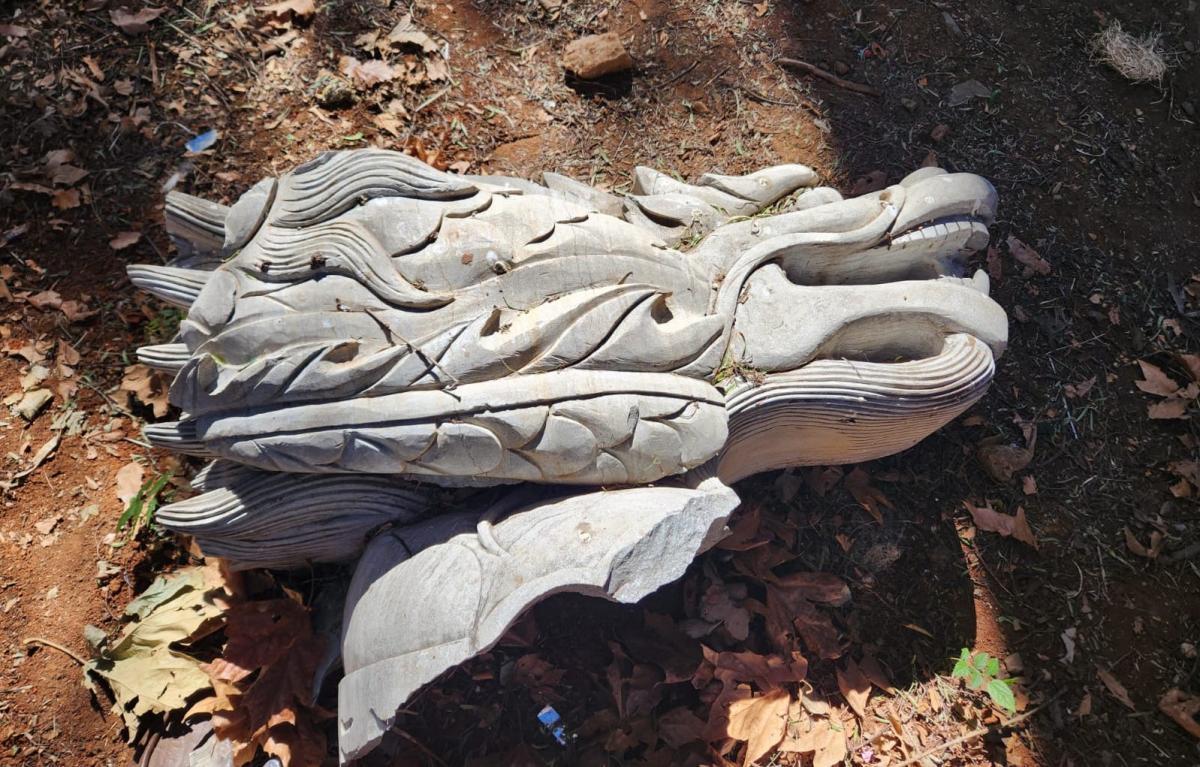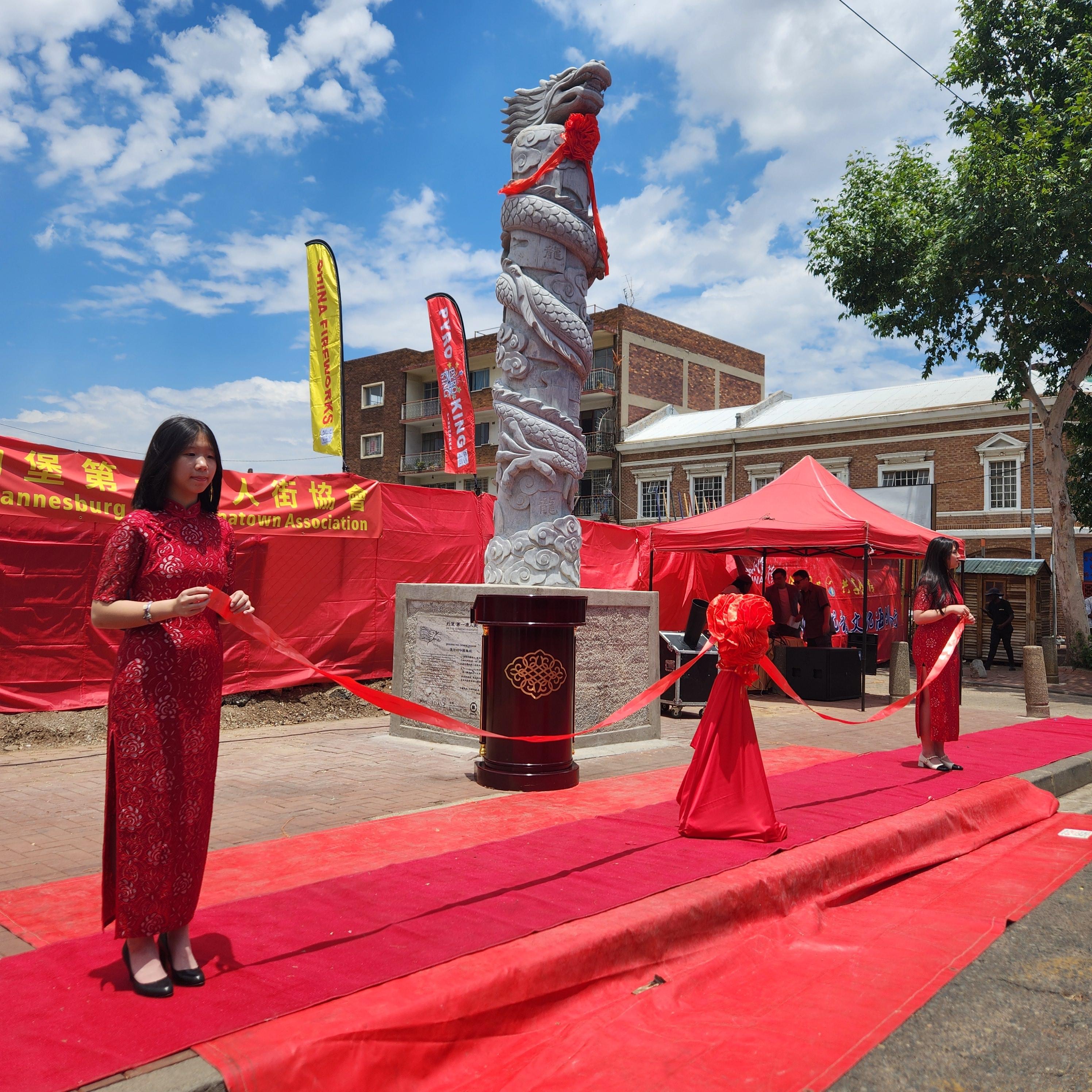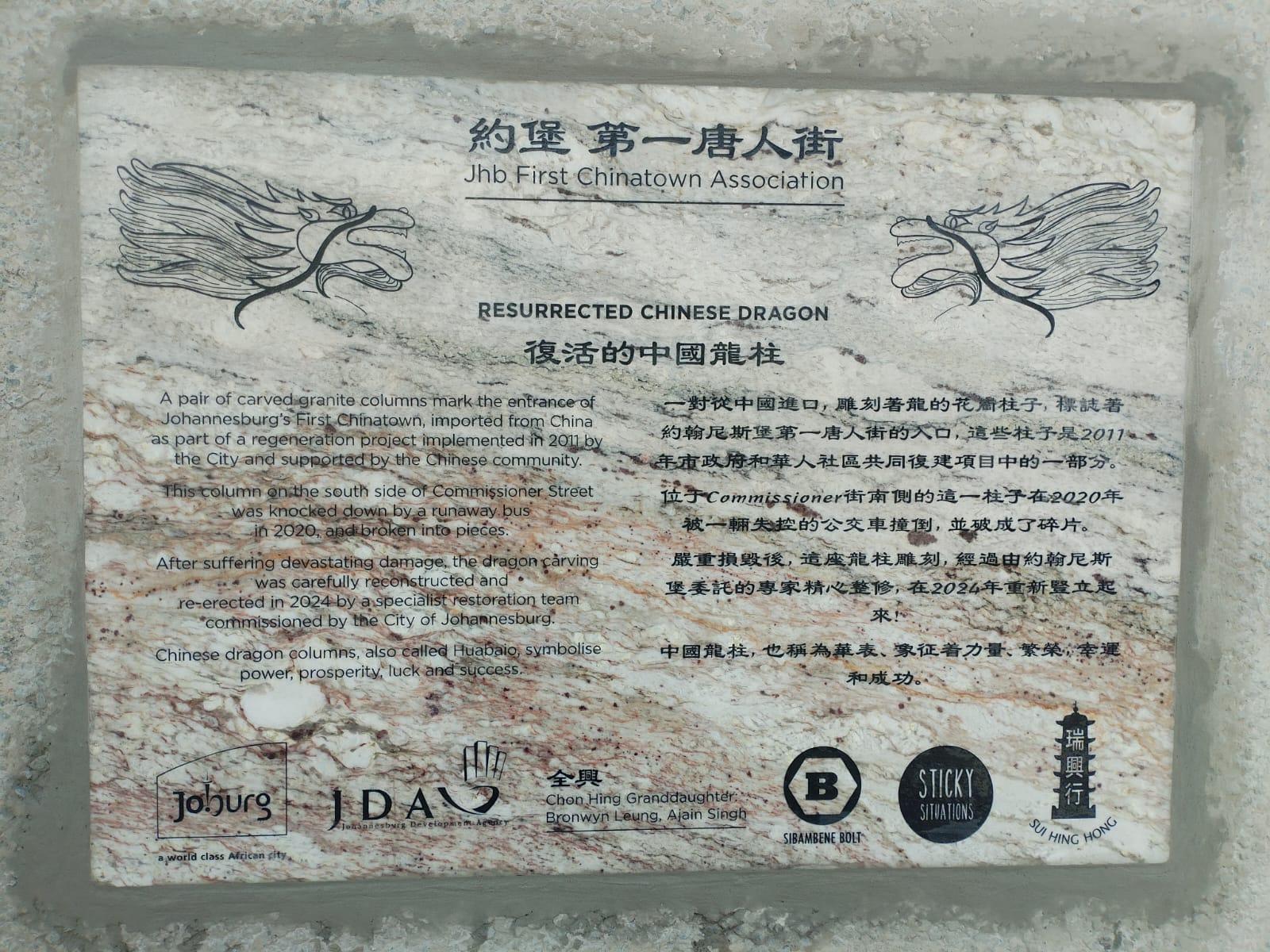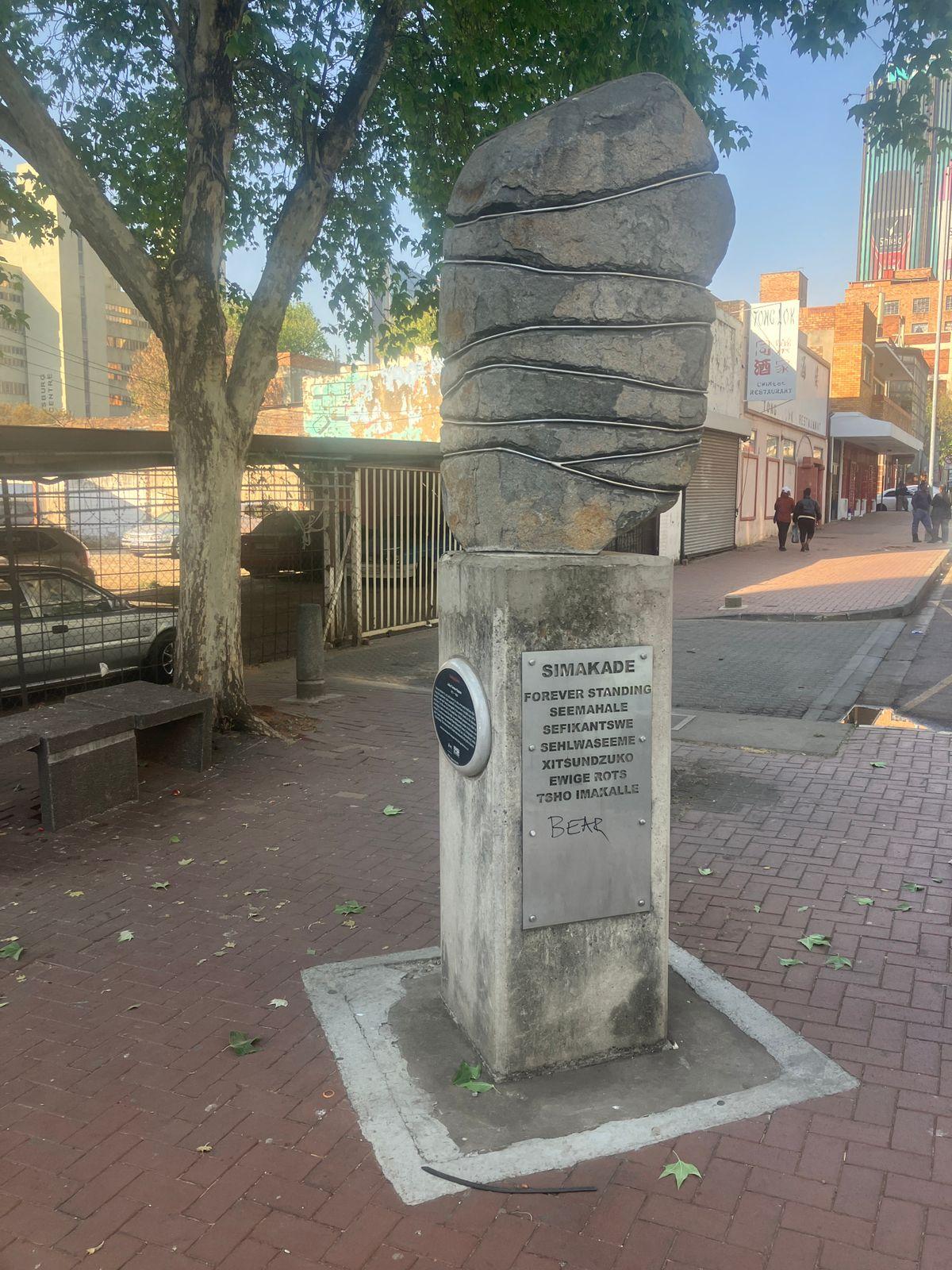
Disclaimer: Any views expressed by individuals and organisations are their own and do not in any way represent the views of The Heritage Portal. If you find any mistakes or historical inaccuracies, please contact the editor.
In a moving speech delivered on November 16, 2024, Eric Itzkin, Deputy Director of Immovable Heritage for the City of Johannesburg, shared the remarkable story of the resurrected dragon pillar in Johannesburg's First Chinatown.
“It always seems impossible until it is done” Nelson Mandela.
Nowhere do those inspiring words from Mandela ring more true than in the remarkable case of the resurrection of the dragon pillar in Johannesburg’s First Chinatown. After having been smashed to pieces, few expected that the dragon would be reconstructed to rise majestically before our eyes.
In 2011, a pair of dragon pillars carved from granite were erected at the entrance of Johannesburg’s first Chinatown on Commissioner Street in Ferreirastown. The two carved granite columns were imported from China as part of a regeneration project that was implemented by the City with support by the local Chinese community.
Tragedy struck in 2020 when one of the columns was knocked down by a runaway Rea Vaya bus. The pillar suffered devastating damage, with the head of the dragon decapitated but thankfully still in one piece which was kept safely (see main image).
How then to restore the dignity and integrity of the dragon which had all but been destroyed?
We considered importing a replacement sculpture from China, but costs would have been sky-high, especially considering the cost of freighting.
Thoughts then turned to the idea of working with what was left, to carefully assemble the fallen granite pieces, reconstruct, restore and re-erect the dragon pillar at the site.
This was the route taken to reconstruct the dragon - made possible by a skilled and dedicated team commissioned by the City of Johannesburg together with the Johannesburg Development Agency. Included in the team were a stone restoration specialist, and structural engineer, together with experienced artisans and artists.
To ensure structural integrity, the method followed was to drill through the centre of the column (using specialized water-drilling equipment) to insert a central steel rod for support. Loose pieces of the damaged sculpture were fitted back onto the column using a specialized granite glue.
Back in 2011, the granite was imported from China, and the exact colour is not available in South Africa. For the restoration in 2024, the colour has been matched as closely as possible - using ground-up materials from the original granite mixed in with the epoxy - while ensuring long-term durability.
Welcoming the resurrected Dragon Pillar
Marks from the damage suffered by the pillar remain visible, and they are part of the history of the dragon. With weathering over time, the colours will merge, but some wounds will still be visible from where the piece was damaged and carefully repaired.
Accepted restoration techniques were applied for this job, starting with the concept of anastylosis, a heritage practice where an historical artwork or monument is restored using the original fallen parts and materials:
- Value is placed on the original materials
- Damage and signs of wear are shown and celebrated
- Where repairs are done these are not aged to match the original but allowed to weather over time
We also drew from the Japanese concept of Kintsugi, meaning golden scar. Kintsugi is the Japanese art of mending what has been damaged through the process of using gold to mend the cracks:
- The item that is scarred or damaged should be repaired instead of discarded with the scar representing experience (or the passage of time) that should be valued.
- Kintsugi follows the Japanese concept of “wabi sabi” which is a worldview centered on acceptance and transience of imperfection.
- The act of repairing and reusing as much of the existing dragon as possible can be seen as a way of honouring the original community who helped bring the dragon here, preserving its materiality and originality.
The dragon sculpture was painstakingly restored in August and September 2024. The column has been strengthened with a metal core, and bollards have been mounted to protect the artwork.
A beautiful plaque of white marble - which is an artwork in itself - has been added to tell the story of the resurrected dragon.
Plaque for the Resurrected Dragon
Chinese dragon columns called Huabiao are entwined by carved dragons. These dragon columns are traditionally erected in pairs at entrances to palace buildings, outside tombs and ancestral temples, and along processional paths. Dragon pillars are also seen at the entrance to Chinatowns in cities around the world, including the one in Cyrildene, and here at Johannesburg’s First Chinatown, which holds a history that goes back to the early days of Johannesburg.
The dragon pillars symbolise power, prosperity, luck and success.
Perhaps more than any other, our resurrected dragon, with its remarkable comeback from adversity, represents resilience and the power to overcome.
This theme of residence in the face of adversity is also represented in another nearby artwork which talks to deaths in detention at the former John Vorster Police Station. Created by artist Pat Mautloa, the artwork is close to Johannesburg Central Police Station, at the intersection of Margaret Mcingana and Commissioner Street. The artwork features a chained and lacerated rock as a symbol of fortitude in the face of brutality that was commonplace in the adjacent building during the apartheid period. The title of the artwork “Simakade” means “Forever standing” in Zulu and pays tribute to people who withstood and survived a time of torture and killing, while continuing to strive for a more humane society.
Simakade Public Artwork
Coming back to the re-born Dragon, our thanks go to:
- The Johannesburg First Chinatown Association, and Chairperson King Pon
- Mr Walter Pon for his inspiration and tireless commitment
- The City Directorate of Arts Culture and Heritage.
- The Johannesburg Development Agency who commissioned the restoration work on behalf of the Directorate
- Jennifer van den Bussche and her company Sticky situations who coordinated the work. Jennifer also designed the new plaque.
- Sibambene Bolt Heritage Construction represented by Cleo Sithole.
We thank the sponsors for the plaque, namely King Pon of Sui Hing Hon, and the late Chon Hing’s grand-daughter Bronwyn Leung and Ajain Singh.
This event to relaunch the dragon was organized by the Big 6 Association and the Johannesburg First Chinatown Association.
Eric Itzkin delivering his speech
Eric Itzkin is the Deputy Director: Immovable Heritage: Directorate of Sports, Arts and Culture at the City of Johannesburg.
Comments will load below. If for any reason none appear click here for some troubleshooting tips. If you would like to post a comment and need instructions click here.




